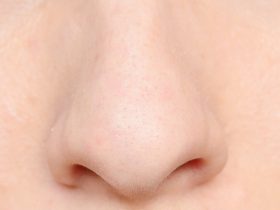At the recent American Rhinologic Society Meeting in Philadelphia (Sep 9-10, 2022), a team of researchers from the University of Texas Medical Branch (UTMB) led by Joshua J. La presented their discoveries in a poster titled “A Social Media Analysis of New-Age Devices in the Rhinology Industry.”
Social media has influenced the medical field from various perspectives, including education, advertising, and research. Several recent studies have examined how physicians, patients, and the medical industry use social media. New instruments have also been initiated in rhinology to treat nose and sinus diseases. This is primarily because of improvements in endoscopic sinus surgeries that use less invasive methods. However, no one knows how these new rhinology procedures appear in Facebook and Instagram posts.
The researchers searched for public posts on Facebook and Instagram from 2017 to May 2022 using various keywords such as sinuva, clarifix, latera, vivaer, rhinaer, balloon sinuplasty, and eustachian tube dilation. Furthermore, they put each post into a category based on the author’s point of view, the time frame, the type of media, the topic, and the tone. The researchers also examined the trends among social media sites.
According to the study findings, balloon sinuplasty accounts for 62% of rhinology industry-related posts on Instagram, followed by clarifix (14%), vivaer and latera (9%), and sinuva and rhinaer (3%). On Facebook, data is more evenly distributed, ranging from 22% for balloon sinuplasty to 9% for rhinaer. According to Instagram data, approximately 88 % of the perspectives are from physicians; the overall tones were mostly positive or neutral; approximately 57 % of the topics are advertisements; about 83 % of the media type was photos, and approximately 80 %of the time frame was mainly non-operative.
These are consistent with Facebook’s aggregate data: approximately 76 % of the perspectives are from physicians; 63 % of the overall tones were neutral; the most common topic was mostly advertisement or informational; about 70 % of the media type was photos, and approximately 86 %of the time frame mainly was non-operative. These findings suggested that social media allows physicians, patients, and industries to find and share information on various medical topics. Patients’ comments reveal their attitudes toward new-age products and rhinologic procedures. As a result of this feedback, physicians and pharmaceutical companies will use social media for advertising and sharing information, which will undoubtedly drive patients to social media to learn more about these products and procedures.
Notably, rhinoplasty demand has increased in recent years and has become one of the most common cosmetic procedures performed globally. Aside from the traditional methods, aesthetic surgeons have used various advertising methods. One of the most recent methods is to use multiple social media platforms, which are available to and used by millions of people worldwide. This study found that social media significantly impacts surgical procedure participation.




